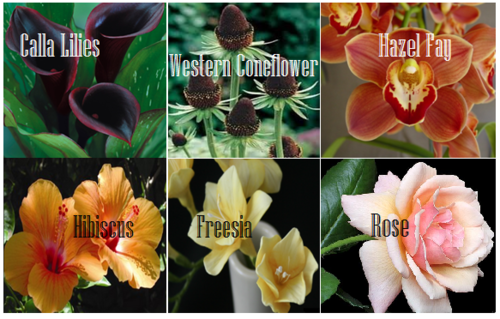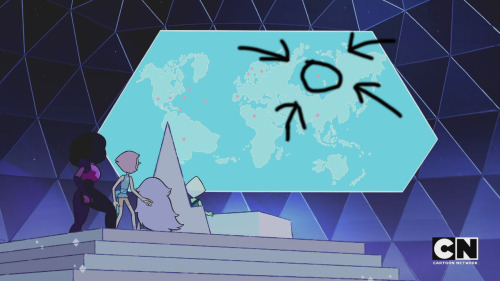Reblogging For Future Reference. Very Informative.
Reblogging for future reference. Very informative.
Injury angst for writing dummies.
Hospitals and injury are always such a staple of angst fics, but 9 times out of 10 the author has clearly never been in an emergency situation and the scenes always come off as over-dramatized and completely unbelievable. So here’s a crash course on hospital life and emergencies for people who want authenticity. By someone who spends 85% of her time in a hospital.
Emergency Departments/Ambulances.
Lights and sirens are usually reserved for the actively dying. Unless the person is receiving CPR, having a prolonged seizure or has an obstructed airway, the ambulance is not going to have lights and sirens blaring. I have, however, seen an ambulance throw their lights on just so they can get back to the station faster once. Fuckers made me late for work.
Defibrillators don’t do that. You know, that. People don’t go flying off the bed when they get shocked. But we do scream “CLEAR!!” before we shock the patient. Makes it fun.
A broken limb, surprisingly, is not a high priority for emergency personnel. Not unless said break is open and displaced enough that blood isn’t reaching a limb. And usually when it’s that bad, the person will have other injuries to go with it.
Visitors are not generally allowed to visit a patient who is unstable. Not even family. It’s far more likely that the family will be stuck outside settling in for a good long wait until they get the bad news or the marginally better news. Unless it’s a child. But if you’re writing dying children in your fics for the angst factor, I question you sir.
Unstable means ‘not quite actively dying, but getting there’. A broken limb, again, is not unstable. Someone who came off their motorbike at 40mph and threw themselves across the bitumen is.
CPR is rarely successful if someone needs it outside of hospital. And it is hard fucking work. Unless someone nearby is certified in advanced life support, someone who needs CPR is probably halfway down the golden tunnel moving towards the light.
Emergency personnel ask questions. A lot of questions. So many fucking questions. They don’t just take their next victim and rush off behind the big white doors into the unknown with just a vague ‘WHAT HAPPENED? SHE HIT HER HEAD?? DON’T WORRY SIR!!!’ They’re going to get the sir and ask him so many questions about what happened that he’s going to go cross eyed. And then he’s going to have to repeat it to the doctor. And then the ICU consultant. And the police probably.
In a trauma situation (aka multiple injuries (aka car accident, motorbike accident, falling off a cliff, falling off a horse, having a piano land on their head idfk you get the idea)) there are a lot of people involved. A lot. I can’t be fucked to go through them all, but there’s at least four doctors, the paramedics, five or six nurses, radiographers, surgeons, ICU consultants, students, and any other specialities that might be needed (midwives, neonatal transport, critical retrieval teams etc etc etc). There ain’t gonna be room to breathe almost when it comes to keeping someone alive.
Emergency departments are a life of their own so you should probably do a bit of research into what might happen to your character if they present there with some kind of illness or injury before you go ahead and scribble it down.
Wards
Nurses run them. No seriously. The patient will see the doctor for five minutes in their day. The nurse will do the rest. Unless the patient codes.
There is never a defibrillator just sitting nearby if a patient codes.
And we don’t defibrillate every single code.
If the code does need a defibrillator, they need CPR.
And ICU.
They shouldn’t be on a ward.
There are other people who work there too. Physiotherapists will always see patients who need rehab after breaking a limb. Usually legs, because they need to be shown how to use crutches properly.
Wards are separated depending on what the patient’s needs are. Hospitals aren’t separated into ICU, ER and Ward. It’s usually orthopaedic, cardiac, neuro, paediatric, maternity, neonatal ICU, gen surg, short stay surg, geriatric, palliative…figure out where your patient is gonna be. The care they get is different depending on where they are.
ICU.
A patient is only in ICU if they’re at risk of active dying. I swear to god if I see one more broken limb going into ICU in a fic to rank up the angst factor I’m gonna shit. It doesn’t happen. Stop being lazy.
Tubed patients can be awake. True story. They can communicate too. Usually by writing, since having a dirty great tube down the windpipe tends to impede ones ability to talk.
The nursing care is 1:1 on an intubated patient. Awake or not, the nurse is not gonna leave that room. No, not even to give your stricken lover a chance to say goodbye in private. There is no privacy. Honestly, that nurse has probably seen it all before anyway.
ICU isn’t just reserved for intubated patients either. Major surgeries sometimes go here post-op to get intensive care before they’re stepped down. And by major I mean like, grandpa joe is getting his bladder removed because it’s full of cancer.
Palliative patients and patients who are terminal will not go to ICU. Not unless they became terminally ill after hitting ICU. Usually those ones are unexpected deaths. Someone suffering from a long, slow, gradually life draining illness will probably go to a general ward for end of life care. They don’t need the kind of intensive care an ICU provides because…well..they’re not going to get it??
Operations.
No one gets rushed to theatre for a broken limb. Please stop. They can wait for several days before they get surgery on it.
Honestly? No one gets ‘rushed’ to theatre at all. Not unless they are, again, actively dying, and surgery is needed to stop them from actively dying.
Except emergency caesarians. Them babies will always get priority over old mate with the broken hip. A kid stuck in a birth canal and at risk of death by pelvis is a tad more urgent than a gall stone. And the midwives will run. I’ve never seen anyone run as fast as a midwife with a labouring woman on the bed heading to theatres for an emergency caesar.
Surgery doesn’t take as long as you think it does. Repairing a broken limb? Two hours, maybe three tops. Including time spent in recovery. Burst appendix? Half an hour on the table max, maybe an hour in recovery. Caesarian? Forty minutes or so. Major surgeries (organs like kidneys, liver and heart transplants, and major bowel surgeries) take longer.
You’re never going to see the theatre nurses. Ever. They’re like their own little community of fabled myth who get to come to work in their sweatpants and only deal with unconscious people. It’s the ward nurse who does the pick up and drop offs.
Anyway there’s probably way, way more that I’m forgetting to add but this is getting too long to keep writing shit. The moral of the story is do some research so you don’t look like an idiot when you’re writing your characters getting injured or having to be in hospital. It’s not Greys Anatomy in the real world and the angst isn’t going to be any more intense just because you’re writing shit like it is.
Peace up.
More Posts from Libraryofalexandira11 and Others
1. because that’s so cool, helpful & awesome, imagine the good someone could do with that power & being able to see the world in such a unique beautiful way. & 3. because I could donate to charities more often, have stable employment, enough stability to pursue writing professionally in my own time and be able to support/give back to those I love most.

Reblog with just TWO choices
reblogging for writing tips
Words for Skin Tone | How to Describe Skin Color

We discussed the issues describing People of Color by means of food in Part I of this guide, which brought rise to even more questions, mostly along the lines of “So, if food’s not an option, what can I use?” Well, I was just getting to that!
This final portion focuses on describing skin tone, with photo and passage examples provided throughout. I hope to cover everything from the use of straight-forward description to the more creatively-inclined, keeping in mind the questions we’ve received on this topic.
Standard Description
Basic Colors

Pictured above: Black, Brown, Beige, White, Pink.
“She had brown skin.”
This is a perfectly fine description that, while not providing the most detail, works well and will never become cliché.
Describing characters’ skin as simply brown or beige works on its own, though it’s not particularly telling just from the range in brown alone.
Complex Colors
These are more rarely used words that actually “mean” their color. Some of these have multiple meanings, so you’ll want to look into those to determine what other associations a word might have.

Pictured above: Umber, Sepia, Ochre, Russet, Terra-cotta, Gold, Tawny, Taupe, Khaki, Fawn.
Complex colors work well alone, though often pair well with a basic color in regards to narrowing down shade/tone.
For example: Golden brown, russet brown, tawny beige…
As some of these are on the “rare” side, sliding in a definition of the word within the sentence itself may help readers who are unfamiliar with the term visualize the color without seeking a dictionary.
“He was tall and slim, his skin a russet, reddish-brown.”
Comparisons to familiar colors or visuals are also helpful:
“His skin was an ochre color, much like the mellow-brown light that bathed the forest.”
Modifiers
Modifiers, often adjectives, make partial changes to a word.The following words are descriptors in reference to skin tone.
Dark - Deep - Rich - Cool
Warm - Medium - Tan
Fair - Light - Pale
Rich Black, Dark brown, Warm beige, Pale pink…
If you’re looking to get more specific than “brown,” modifiers narrow down shade further.
Keep in mind that these modifiers are not exactly colors.
As an already brown-skinned person, I get tan from a lot of sun and resultingly become a darker, deeper brown. I turn a pale, more yellow-brown in the winter.
While best used in combination with a color, I suppose words like “tan” “fair” and “light” do work alone; just note that tan is less likely to be taken for “naturally tan” and much more likely a tanned White person.
Calling someone “dark” as description on its own is offensive to some and also ambiguous. (See: Describing Skin as Dark)
Undertones
Undertones are the colors beneath the skin, seeing as skin isn’t just one even color but has more subdued tones within the dominating palette.

pictured above: warm / earth undertones: yellow, golden, copper, olive, bronze, orange, orange-red, coral | cool / jewel undertones: pink, red, blue, blue-red, rose, magenta, sapphire, silver.
Mentioning the undertones within a character’s skin is an even more precise way to denote skin tone.
As shown, there’s a difference between say, brown skin with warm orange-red undertones (Kelly Rowland) and brown skin with cool, jewel undertones (Rutina Wesley).
“A dazzling smile revealed the bronze glow at her cheeks.”
“He always looked as if he’d ran a mile, a constant tinge of pink under his tawny skin.”
Standard Description Passage
“Farah’s skin, always fawn, had burned and freckled under the summer’s sun. Even at the cusp of autumn, an uneven tan clung to her skin like burrs. So unlike the smooth, red-brown ochre of her mother, which the sun had richened to a blessing.”
-From my story “Where Summer Ends” featured in Strange Little Girls
Here the state of skin also gives insight on character.
Note my use of “fawn” in regards to multiple meaning and association. While fawn is a color, it’s also a small, timid deer, which describes this very traumatized character of mine perfectly.
Though I use standard descriptions of skin tone more in my writing, at the same time I’m no stranger to creative descriptions, and do enjoy the occasional artsy detail of a character.
Creative Description
Whether compared to night-cast rivers or day’s first light…I actually enjoy seeing Characters of Colors dressed in artful detail.
I’ve read loads of descriptions in my day of white characters and their “smooth rose-tinged ivory skin”, while the PoC, if there, are reduced to something from a candy bowl or a Starbucks drink, so to actually read of PoC described in lavish detail can be somewhat of a treat.
Still, be mindful when you get creative with your character descriptions. Too many frills can become purple-prose-like, so do what feels right for your writing when and where. Not every character or scene warrants a creative description, either. Especially if they’re not even a secondary character.
Using a combination of color descriptions from standard to creative is probably a better method than straight creative. But again, do what’s good for your tale.
Natural Settings - Sky

Pictured above: Harvest Moon -Twilight, Fall/Autumn Leaves, Clay, Desert/Sahara, Sunlight - Sunrise - Sunset - Afterglow - Dawn- Day- Daybreak, Field - Prairie - Wheat, Mountain/Cliff, Beach/Sand/Straw/Hay.
Now before you run off to compare your heroine’s skin to the harvest moon or a cliff side, think about the associations to your words.
When I think cliff, I think of jagged, perilous, rough. I hear sand and picture grainy, yet smooth. Calm. mellow.
So consider your character and what you see fit to compare them to.
Also consider whose perspective you’re describing them from. Someone describing a person they revere or admire may have a more pleasant, loftier description than someone who can’t stand the person.
“Her face was like the fire-gold glow of dawn, lifting my gaze, drawing me in.”
“She had a sandy complexion, smooth and tawny.”
Even creative descriptions tend to draw help from your standard words.
Flowers

Pictured above: Calla lilies, Western Coneflower, Hazel Fay, Hibiscus, Freesia, Rose
It was a bit difficult to find flowers to my liking that didn’t have a 20 character name or wasn’t called something like “chocolate silk” so these are the finalists.
You’ll definitely want to avoid purple-prose here.
Also be aware of flowers that most might’ve never heard of. Roses are easy, as most know the look and coloring(s) of this plant. But Western coneflowers? Calla lilies? Maybe not so much.
“He entered the cottage in a huff, cheeks a blushing brown like the flowers Nana planted right under my window. Hazel Fay she called them, was it?”
Assorted Plants & Nature

Pictured above: Cattails, Seashell, Driftwood, Pinecone, Acorn, Amber
These ones are kinda odd. Perhaps because I’ve never seen these in comparison to skin tone, With the exception of amber.
At least they’re common enough that most may have an idea what you’re talking about at the mention of “pinecone.“
I suggest reading out your sentences aloud to get a better feel of how it’ll sounds.
“Auburn hair swept past pointed ears, set around a face like an acorn both in shape and shade.”
I pictured some tree-dwelling being or person from a fantasy world in this example, which makes the comparison more appropriate.
I don’t suggest using a comparison just “cuz you can” but actually being thoughtful about what you’re comparing your character to and how it applies to your character and/or setting.
Wood

Pictured above: Mahogany, Walnut, Chestnut, Golden Oak, Ash
Wood can be an iffy description for skin tone. Not only due to several of them having “foody” terminology within their names, but again, associations.
Some people would prefer not to compare/be compared to wood at all, so get opinions, try it aloud, and make sure it’s appropriate to the character if you do use it.
“The old warlock’s skin was a deep shade of mahogany, his stare serious and firm as it held mine.”
Metals

Pictured above: Platinum, Copper, Brass, Gold, Bronze
Copper skin, brass-colored skin, golden skin…
I’ve even heard variations of these used before by comparison to an object of the same properties/coloring, such as penny for copper.
These also work well with modifiers.
“The dress of fine white silks popped against the deep bronze of her skin.”
Gemstones - Minerals

Pictured above: Onyx, Obsidian, Sard, Topaz, Carnelian, Smoky Quartz, Rutile, Pyrite, Citrine, Gypsum
These are trickier to use. As with some complex colors, the writer will have to get us to understand what most of these look like.
If you use these, or any more rare description, consider if it actually “fits” the book or scene.
Even if you’re able to get us to picture what “rutile” looks like, why are you using this description as opposed to something else? Have that answer for yourself.
“His skin reminded her of the topaz ring her father wore at his finger, a gleaming stone of brown, mellow facades.”
Physical Description
Physical character description can be more than skin tone.
Show us hair, eyes, noses, mouth, hands…body posture, body shape, skin texture… though not necessarily all of those nor at once.
Describing features also helps indicate race, especially if your character has some traits common within the race they are, such as afro hair to a Black character.
How comprehensive you decide to get is up to you. I wouldn’t overdo it and get specific to every mole and birthmark. Noting defining characteristics is good, though, like slightly spaced front teeth, curls that stay flopping in their face, hands freckled with sunspots…
General Tips
Indicate Race Early: I suggest indicators of race be made at the earliest convenience within the writing, with more hints threaded throughout here and there.
Get Creative On Your Own: Obviously, I couldn’t cover every proper color or comparison in which has been “approved” to use for your characters’ skin color, so it’s up to you to use discretion when seeking other ways and shades to describe skin tone.
Skin Color May Not Be Enough: Describing skin tone isn’t always enough to indicate someone’s ethnicity. As timeless cases with readers equating brown to “dark white” or something, more indicators of race may be needed.
Describe White characters and PoC Alike: You should describe the race and/or skin tone of your white characters just as you do your Characters of Color. If you don’t, you risk implying that White is the default human being and PoC are the “Other”).
PSA: Don’t use “Colored.” Based on some asks we’ve received using this word, I’d like to say that unless you or your character is a racist grandmama from the 1960s, do not call People of Color “colored” please.
Not Sure Where to Start? You really can’t go wrong using basic colors for your skin descriptions. It’s actually what many people prefer and works best for most writing. Personally, I tend to describe my characters using a combo of basic colors + modifiers, with mentions of undertones at times. I do like to veer into more creative descriptions on occasion.
Want some alternatives to “skin” or “skin color”? Try: Appearance, blend, blush, cast, coloring, complexion, flush, glow, hue, overtone, palette, pigmentation, rinse, shade, sheen, spectrum, tinge, tint, tone, undertone, value, wash.
Skin Tone Resources
List of Color Names
The Color Thesaurus
Skin Undertone & Color Matching
Tips and Words on Describing Skin
Photos: Undertones Described (Modifiers included)
Online Thesaurus (try colors, such as “red” & “brown”)
Don’t Call me Pastries: Creative Skin Tones w/ pics I
Writing & Description Guides
WWC Featured Description Posts
WWC Guide: Words to Describe Hair
Writing with Color: Description & Skin Color Tags
7 Offensive Mistakes Well-intentioned Writers Make
I tried to be as comprehensive as possible with this guide, but if you have a question regarding describing skin color that hasn’t been answered within part I or II of this guide, or have more questions after reading this post, feel free to ask!
~ Mod Colette
ooh mythology yay! 😀
Myths, Creatures, and Folklore
Want to create a religion for your fictional world? Here are some references and resources!
General:
General Folklore
Various Folktales
Heroes
Weather Folklore
Trees in Mythology
Animals in Mythology
Birds in Mythology
Flowers in Mythology
Fruit in Mythology
Plants in Mythology
Folktales from Around the World
Africa:
Egyptian Mythology
African Mythology
More African Mythology
Egyptian Gods and Goddesses
The Gods of Africa
Even More African Mythology
West African Mythology
All About African Mythology
African Mythical Creatures
Gods and Goddesses
The Americas:
Aztec Mythology
Haitian Mythology
Inca Mythology
Maya Mythology
Native American Mythology
More Inca Mythology
More Native American Mythology
South American Mythical Creatures
North American Mythical Creatures
Aztec Gods and Goddesses
Asia:
Chinese Mythology
Hindu Mythology
Japanese Mythology
Korean Mythology
More Japanese Mythology
Chinese and Japanese Mythical Creatures
Indian Mythical Creatures
Chinese Gods and Goddesses
Hindu Gods and Goddesses
Korean Gods and Goddesses
Europe:
Basque Mythology
Celtic Mythology
Etruscan Mythology
Greek Mythology
Latvian Mythology
Norse Mythology
Roman Mythology
Arthurian Legends
Bestiary
Celtic Gods and Goddesses
Gods and Goddesses of the Celtic Lands
Finnish Mythology
Celtic Mythical Creatures
Gods and Goddesses
Middle East:
Islamic Mythology
Judaic Mythology
Mesopotamian Mythology
Persian Mythology
Middle Eastern Mythical Creatures
Oceania:
Aboriginal Mythology
Polynesian Mythology
More Polynesian Mythology
Mythology of the Polynesian Islands
Melanesian Mythology
Massive Polynesian Mythology Post
Maori Mythical Creatures
Hawaiian Gods and Goddesses
Hawaiian Goddesses
Gods and Goddesses
Creating a Fantasy Religion:
Creating Part 1
Creating Part 2
Creating Part 3
Creating Part 4
Fantasy Religion Design Guide
Using Religion in Fantasy
Religion in Fantasy
Creating Fantasy Worlds
Beliefs in Fantasy
Some superstitions:
Read More
Reblogging to remember this.... because wow this was totally my head canon, and wow that’s amazing! :)




amell, surana, jowan, and anders, just kids stuck in a tower.
(this was going to be the first of two parts, with the second showing the four of them as full adults, grown into their roles as heroes and rebels, but a whole lot of real life shit happened, so that’s on the back burner for now.)
Cool test, I got The Protector.

Huh... what if I’m the entire horizontal x axis. ... I guess I’m a workaholic straight liner.

reblogging for future reference.
Ambient sounds for writers
Find the right place to write your novel…
Nature
Arctic ocean
Blizzard in village
Blizzard in pine forest
Blizzard from cave
Blizzard in road
Beach
Cave
Ocean storm
Ocean rocks with rain
River campfire
Forest in the morning
Forest at night
Forest creek
Rainforest creek
Rain on roof window
Rain on tarp tent
Rain on metal roof
Rain on window
Rain on pool
Rain on car at night
Seaside storm
Swamp at night
Sandstorm
Thunderstorm
Underwater
Wasteland
Winter creek
Winter wind
Winter wind in forest
Howling wind
Places
Barn with rain
Coffee shop
Restaurant with customers
Restaurant with few customers
Factory
Highway
Garden
Garden with pond and waterfall
Fireplace in log living room
Office
Call center
Street market
Study room from victorian house with rain
Trailer with rain
Tent with rain
Jacuzzi with rain
Temple
Server room
Windmill
War
Fictional places
Chloe’s room (Life is Strange)
Blackwell dorm (Life is Strange)
Two Whales Diner (Life is Strange)
Star Wars apartment (Star Wars)
Star Wars penthouse (Star Wars)
Tatooine (Star Wars)
Coruscant with rain (Star Wars)
Yoda’s hut with rain ( Star Wars)
Luke’s home (Star Wars)
Death Star hangar (Star wars)
Azkaban prison (Harry Potter)
Hogwarts library with rain (Harry Potter)
Ravenclaw common room (Harry Potter)
Hufflepuff common room (Harry Potter)
Slytherin common room (Harry Potter)
Gryffindor common room (Harry Potter)
Hagrid’s hut (Harry Potter)
Hobbit-hole house (The Hobbit)
Diamond City (Fallout 4)
Things
Dishwasher
Washing machine
Fireplace
Transportation
Boat engine room
Cruising boat
Train ride
Train ride in the rain
Train station
Plane trip
Private jet cabin
Airplane cabin
Airport lobby
First class jet
Sailboat
Submarine
Historical
Fireplace in medieval tavern
Medieval town
Medieval docks
Medieval city
Pirate ship in tropical port
Ship on rough sea
Ship cabin
Ship sleeping quarter
Titanic first class dining room
Old west saloon
Sci-fi
Spaceship bedroom
Space station
Cyberpunk tearoom
Cyberpunk street with rain
Futuristic server room
Futuristic apartment with typing
Futuristic rooftop garden
Steampunk balcony rain
Post-apocalyptic
Harbor with rain
City with rain
City ruins turned swamp
Rusty sewers
Train station
Lighthouse
Horror
Haunted mansion
Haunted road to tavern
Halloween
Stormy night
Asylum
Creepy forest
Cornfield
World
New York
Paris
Paris bistro
Tokyo street
Chinese hotel lobby
Asian street at nightfall
Asian night market
Cantonese restaurant
Coffee shop in Japan
Coffee shop in Paris
Coffee shop in Korea
British library
Trips, rides and walkings
Trondheim - Bodø
Amsterdam - Brussels
Glasgow - Edinburgh
Oxford - Marylebone
Seoul - Busan
Gangneung - Yeongju
Hiroshima
Tokyo metro
Osaka - Kyoto
Osaka - Kobe
London
São Paulo
Seoul
Tokyo
Bangkok
Ho Chi Minh (Saigon)
Alps
New York
Hong Kong
Taipei
I got Kite Light.... Even as a villainous version, not very intimidating. Sounds like I fly around bringing harmless light places.
I tried again but got... Gentleman Cat... So a nice polite cross dressing cat burglar, is next most intimidating thing I could be as a villain... :(
ever wanted to know what your name might be if you were a villain using the common thematic structures of ridiculous DC villains?
wonder no more.
i am King Egg.
Ooh helpful reference
SHOUT OUT TO MY WRITER HOMIES WITH MUSLIM OCS/CHARACTERS;
1. WEARING A SHAWL TO BATTLE IS THE EQUIVALENT OF HAVING GIRLS FIGHT IN STILLETTOS.
Just so you know, this is what I’m talking about;

-Is it bad-ass? Abso-fucking-lutely. Is it Practical? Not a chance in hell. Especially not if it’s silk. If it’s cotton, you are skating on thin fucking ice. That bitch will NOT stay on. It barely stays on with me just walking down the street to Walmart. Wielding axes and rifles and swords and daggers? I PROMISE you it will not do the job it’s expected to-WHICH IS TO COVER THE HAIR. (Some muslim girls dont wear them-and that’s fine. But those who DO do it to completely cover the hair in public. Is it ~Aesthetic~ to see the flyaway hairs in battle? Sure, but those aren’t usually practical either. )Consider instead;

sport shawls
-For one thing, it’s actually DESIGNED to be worn to atheletic activities. Archers tuck hems into the collar of their shirts so they don’t get in the way, and track runners pins (ill get to this bit later) them down into the shirts to prevent flyaway bits and to stop them from getting slapped in the face. It’s breathable, stretchy, presentable without being attention seeking.

Bawals
In a pinch, bawals work just as well-as long as you specify that they are COTTON. Unlike the shawl, which are rectangular, bawals are SQUARE, and thus easier to manipulate, fold and pin down. If you wear it right, they carry an equal aesthetic value to shawls, and come in plenty of pretty patterns as well.
2. I’m not sure about the USA, but the girls I know wear this underneath the headscarf;

Does it kinda look like a beanie? It sort of works like a beanie too. Hair is slippery. It tucks in any extra hair you might miss just by wearing the headscarf, its harder to pull down and on the event the shawl DOES fall down, your hair is still not exposed. It protects the ears-which is important even on a daily basis, because pins, headphones and any other headgear that might pinch them. It comes in plenty of designs, including ones that has open backs to allow long hair and ponytails.

3.SPEAKING OF PINS; I’M TALKING ABOUT THESE BAD BOYS;


BROOCHES


though , i suppose most of y’all are most familiar with safety pins, right?

what’s the difference? Well, if your oc/character is an athlete, it’s actually LEAST likely they’ll be wearing SAFETY PINS. They’re cheap and super easy to buy in bulk, true, but they also SUPER easy to wear out even with the smallest amount of strenuous activity. Between the three of ‘em, I’d put the brooches as the best option to wear in battle because 1) it has a large surface area, thus hurts less when pressed on with heavy items, which includes bag straps and weapons, (pins are sharp and can poke you painfully); and 2) more secure-the latch is covered by the gaudy jewellery above, and theyre usually smaller and tighter. Stays on the stubbornnest, even when headscarf is pulled. very roughly. I’m saying that even the cheapest brooches will allow the shawl to be ripped apart before even letting it go.
3. They probably ponytail their hair. Because Come On, guys.
Anyway it’s been bothering me and I just thought if yall could bother knowing the difference between skin tones for POC you could bother with muslim practicalities too. Or something
Russia may have a big hole in it, but, what happened to Western Australia and South Australia!! That would not be helpful for the ocean’s ecosystem and that’s a lot of damage...

does anyone wana talk about THIS GIANT FUCKING HOLE WHERE RUSSIA SHOULD BE.
-
 herehaveafandom reblogged this · 1 month ago
herehaveafandom reblogged this · 1 month ago -
 lavastrawberries liked this · 2 months ago
lavastrawberries liked this · 2 months ago -
 keepers-art-n-craft reblogged this · 2 months ago
keepers-art-n-craft reblogged this · 2 months ago -
 cyissupersilly liked this · 2 months ago
cyissupersilly liked this · 2 months ago -
 heckcareoxytwit reblogged this · 2 months ago
heckcareoxytwit reblogged this · 2 months ago -
 heckcareoxytwit reblogged this · 2 months ago
heckcareoxytwit reblogged this · 2 months ago -
 heckcareoxytwit liked this · 2 months ago
heckcareoxytwit liked this · 2 months ago -
 sukurarose92 reblogged this · 2 months ago
sukurarose92 reblogged this · 2 months ago -
 dinoval liked this · 3 months ago
dinoval liked this · 3 months ago -
 a-slightly-rusty-kettle liked this · 3 months ago
a-slightly-rusty-kettle liked this · 3 months ago -
 diamondrose015 liked this · 4 months ago
diamondrose015 liked this · 4 months ago -
 jay-bird54 liked this · 4 months ago
jay-bird54 liked this · 4 months ago -
 worldbuilding-writing reblogged this · 4 months ago
worldbuilding-writing reblogged this · 4 months ago -
 zimorda liked this · 4 months ago
zimorda liked this · 4 months ago -
 overzealousfrog liked this · 4 months ago
overzealousfrog liked this · 4 months ago -
 scifinut reblogged this · 6 months ago
scifinut reblogged this · 6 months ago -
 skeletalbadger reblogged this · 6 months ago
skeletalbadger reblogged this · 6 months ago -
 cristalk reblogged this · 6 months ago
cristalk reblogged this · 6 months ago -
 mysteryfan12 reblogged this · 6 months ago
mysteryfan12 reblogged this · 6 months ago -
 wreckedhoney reblogged this · 7 months ago
wreckedhoney reblogged this · 7 months ago -
 animeschibia reblogged this · 7 months ago
animeschibia reblogged this · 7 months ago -
 glitterymanta liked this · 8 months ago
glitterymanta liked this · 8 months ago -
 oa-trance liked this · 9 months ago
oa-trance liked this · 9 months ago -
 foxmoth7 liked this · 9 months ago
foxmoth7 liked this · 9 months ago -
 heygirlieyoulostthegame reblogged this · 9 months ago
heygirlieyoulostthegame reblogged this · 9 months ago -
 hagar96roo liked this · 9 months ago
hagar96roo liked this · 9 months ago -
 promptsnoctrecipes reblogged this · 9 months ago
promptsnoctrecipes reblogged this · 9 months ago -
 mika-drop reblogged this · 10 months ago
mika-drop reblogged this · 10 months ago -
 melisnonstop reblogged this · 10 months ago
melisnonstop reblogged this · 10 months ago -
 melisnonstop reblogged this · 10 months ago
melisnonstop reblogged this · 10 months ago -
 espieprinceofrefs reblogged this · 10 months ago
espieprinceofrefs reblogged this · 10 months ago -
 hoodienchaos reblogged this · 10 months ago
hoodienchaos reblogged this · 10 months ago -
 hoodienchaos liked this · 10 months ago
hoodienchaos liked this · 10 months ago -
 estonian-star-trek liked this · 10 months ago
estonian-star-trek liked this · 10 months ago -
 skipcount1 reblogged this · 10 months ago
skipcount1 reblogged this · 10 months ago -
 skipcount1 liked this · 10 months ago
skipcount1 liked this · 10 months ago -
 adazaster liked this · 11 months ago
adazaster liked this · 11 months ago -
 labrador-entity reblogged this · 11 months ago
labrador-entity reblogged this · 11 months ago -
 jesskco liked this · 11 months ago
jesskco liked this · 11 months ago -
 snowanoki reblogged this · 11 months ago
snowanoki reblogged this · 11 months ago -
 snowanoki liked this · 11 months ago
snowanoki liked this · 11 months ago -
 cupoffruit liked this · 11 months ago
cupoffruit liked this · 11 months ago -
 bobothetalkingclown reblogged this · 11 months ago
bobothetalkingclown reblogged this · 11 months ago -
 bobothetalkingclown liked this · 11 months ago
bobothetalkingclown liked this · 11 months ago -
 xeras-ankar reblogged this · 11 months ago
xeras-ankar reblogged this · 11 months ago -
 xeras-ankar liked this · 11 months ago
xeras-ankar liked this · 11 months ago
Persona, Fire Emblem Awakening and Dragon Age Ace fan girl.
201 posts